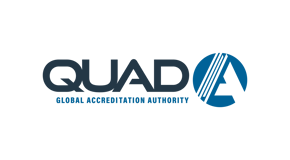In the realm of healthcare, the importance of hand hygiene cannot be overstated. It serves as the first line of defense against the transmission of infectious diseases within healthcare facilities such as Rural Health Clinics (RHC), Ambulatory Surgical Centers (ASC), Office-Based Surgery and Procedural (OBS/OBP), Oral Maxillofacial Surgery (OMS), Pediatric Dentistry, Outpatient Physical Therapy (OPT), and International Surgery and Dentistry facilities. To ensure adherence to hand hygiene protocols, healthcare institutions conduct hand hygiene audits. These audits are critical tools for assessing compliance, identifying areas for improvement, and ultimately enhancing patient safety. These audits are also great projects that can be incorporated into your facility’s Quality Assurance and Performance Improvement (QAPI) program and Program Evaluation.
A hand hygiene audit involves the systematic and unannounced observation and recording of hand hygiene practices based on predefined criteria. These criteria often align with guidelines set forth by leading health organizations, such as the World Health Organization (WHO) or the Centers for Disease Control and Prevention (CDC). The primary goal of these audits is not to penalize facility staff but to provide constructive feedback and educational support to improve hand hygiene practices.
The process of a hand hygiene audit typically involves several key steps. Initially, a team of trained observers is established. These individuals are responsible for monitoring hand hygiene practices within the facility setting. The observers discreetly record hand hygiene actions, noting whether healthcare workers perform hand hygiene at the appropriate times. This may include before touching a patient, before clean/aseptic procedures, after body fluid exposure/risk, after touching a patient, and after touching patient surroundings.
The data collected during the audit is then analyzed to determine compliance rates. This analysis provides valuable insights into the hand hygiene practices of facility staff and identifies patterns or trends that may require attention. For instance, the audit may reveal that compliance is lower during certain times of the day or before performing a task. Such findings are essential for targeting interventions and training programs effectively.
Following the analysis, the results of the hand hygiene audit are shared with the facility staff. This feedback is crucial for fostering a culture of continuous improvement. During feedback sessions, facility staff have the opportunity to discuss barriers to hand hygiene compliance and brainstorm solutions. Moreover, these sessions can serve as educational opportunities, reinforcing the reasons behind hand hygiene protocols and demonstrating proper hand hygiene techniques.
In conclusion, hand hygiene audits are a vital component of infection prevention and control programs in QUAD A accredited facilities. They provide a structured means of assessing hand hygiene practices, identifying areas for improvement, and fostering a culture of safety. They are great QAPI projects whose outcomes can be captured in QAPI program evaluations and Program Evaluations. Through diligent efforts to conduct and act upon the findings of hand hygiene audits, your facility can significantly reduce the transmission of infectious diseases and protect the health and well-being of your patients and staff. As hand hygiene practices evolve and new challenges emerge, the commitment to rigorous hand hygiene audits will remain paramount in the quest to deliver safe, high-quality healthcare that puts your Patients First, Always.
Since 1980, QUAD A (a non-profit, physician-founded and led global accreditation organization) has worked with thousands of healthcare facilities to standardize and improve the quality of healthcare they provide – believing that patient safety should always come first.


